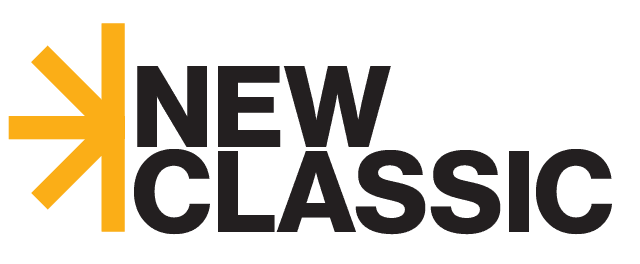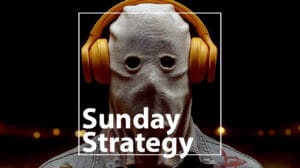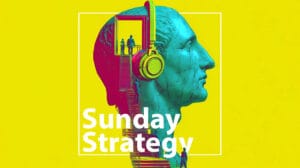In this issue of Sunday Strategy, we look at four stories to think about next week, including: Considering Masculinity Influencers, A New Ice Bucket Challenge, GenZ’s ‘Lifestyle Subsidy’, AI Search Wrexham’s Fairytale.
In addition, we have ads from: Slate Auto, Sonic, Chevrolet, AVIVA and Xfinity.
// Five Stories of the Week:
1.) Considering Modern Masculinity Influencers.
The Movember Institute for Men’s Health has released a new report looking at young men’s engagement and attitudes around masculinity influencers. Modern masculinity has become a booming industry in social media, as influencers espouse everything from fitness to hustle culture and stoicism to young male viewers.
Movember’s report paints a picture of masculinity that is used to motivate heavily towards self improvement and progression, but also to sell, perpetuate stereotypes and push young men to improve above all else. The study found 63% of men 16-25 watching masculinity content and influencers, with 58% feeling happy because of it, 48% saying it gave them a sense of purpose and 38% saying they bought something based on the influencer’s advice. However, this push towards progress comes at a price, as it also led to followers saying they have experienced worthlessness, nervousness and anxiety at significantly higher levels than non-followers. They’re also significantly more likely to workout while injured, take steroids, testosterone or nootropics.
The ideal of a masculine leader and provider sets a standard for young men that products can promise to more accessible. This world view was also shown to make young men more likely to see women as status seekers and feminism as a tool to hold men back. It pushes men to prioritize wealth as a factor in choosing friends. As the report highlights, while modern masculinity content motivates, it is unyielding in how it makes adherents view others and what they need to buy to succeed. The purpose it provides may be clear, but so is the cost.
2.) Can Someone Else Use The Ice Bucket Challenge?
Over the last week, Ice bucket challenge content has made a return 11 years after its original heyday. The social media challenge, where individuals doused themselves with an ice bucket, donated to ALS research and nominated others to do the same has come back due to a University of South Carolina student-run organization called MIND, (Mental Illness Needs Discussion), raising money for mental health.
Can the ice bucket challenge have a comeback like Y2K fashion and flash mobs? More importantly, can it be used to support other causes? Well, in a way it already has. While the best known use of the challenge was to support ALS, it originally started in another form amongst golfers trying to support pet charities. ALS adopted and refined it further into a viral moment, raising $115m in 2014 alone. In addition to its short term impact, a 2024 report into its long term legacy showcased an increase in awareness, research grants and government / NGO support towards the cause.
The benefit of the ice bucket challenge was more than a donation, it was a new level of prominence for the cause. However, copycats didn’t share in that level of success. While adaptations had short term awareness, such as 4.4m views of Matt Damon using toilet water for water.org, the long term impact was left to the most prominent cause.
What does this mean for the new version? Though short term potential for donations is strong, it faces a challenge to put a long term stamp on the moment and will additionally face copy cats if it continues to grow. Charities can share a trend, but those who come to it later have to acknowledge they’re borrowing instead of creating. Here, the power of nostalgia is two fold, driving greater engagement from those that know the challenge originally, but still keeping any long term platform with ALS.
3.) The Gen Z Lifestyle Subsidy.
When Millennials were in their early twenties, free DoorDash and Uber offers became a way of life – so much so that it became known as the ‘Millennial Life Subsidy’. A need to capture a younger demographic early on by being artificially cheap helped to embed these brands in younger consumer’s lives. For Gen Z however, the ‘Lifestyle Subsidy’ isn’t Uber and ClassPass, its AI.
AI companies recognize that students and Gen Z aren’t just frequent users of AI services, they’re an engine for continued usage, advocacy and development. Integrating AI services into these user’s academic and personal lives looks to pay off in the long term, but the challenge remains – which platform will it be? Can a subsidized approach create AI brand loyalty?
Or are heavy users of AI platforms swapping between them? Research indicates Gen Z uses multiple platforms for different things. Once the subsidy ends, are AI platforms doomed to face the same challenges Uber and Lyft did – in converting promotion into loyalty?
4.) What Does AI’s Impact on Search Currently Look Like?
The drumbeat of AI SEO thinking and products has increased in recent months, as many brands begin to see significant changes to web traffic based on AI’s search impact. SE Ranking has produced a piece of research looking at different AI platforms and how they form answers, link to sites and source information.
The report is incredibly detailed, but highlights a few simple takeaways for how we think about AI and search. Platforms are increasingly overlapping in their sources for the same query, as SE Ranking found ChatGPT linked to the same domains as Google AIO and Perplexity over 20% of the time. AI sites are also showing a preference towards video, without a bias against Google – as ChatGPT and Perplexity linked to YouTube in 11% of studied answers vs. 6% of Google’s own. Finally, the research shows how small traffic domains are benefitting in AI, as nearly 50% of AI included domains had traffic of less than 50 daily visitors. While there is still a lot of uncertainty in how AI will impact search, these data points begin to show a varied landscape for brands when it comes to opportunity.
5.) How Far Will the Wrexham Fairytale Go?
No English football team has gone up three levels of the English football pyramid in three consecutive years – until now. Celebrity darling Wrexham’s promotion into the Championship (the second division of English football behind the Premier League) is a remarkable feat powered by an aggressive approach to coaching, staffing and incredibly unique marketing. However, what happens now?
As the Athletic points out, the second tier of English football is a much greater challenge for Wrexham, where they face having the third smallest stadium and will come up against teams that have played in Premier League like recently relegated Ipswich and Liecester. While Wrexham have invested in new facilities (players currently ride between locations to practice and shower) and greater stadium capacity (due in 2026), can their unique style continue to succeed?
Wrexham’s business model of scaling through sponsorship and marketing looks to level up further with a higher league, and the addition of new billionaire minority investors begins to give them tools to start competing more traditionally with other teams. In addition, the star power of its owners, in Ryan Reynolds and Rob McElhenney, drive a talent approach that persuades higher tier talent to drop down to them. Even considering all of this, a fourth consecutive promotion could seem unlikely in the short term, but so did last year’s success.
// Ads You Might Have Missed:
https://www.youtube.com/watch?v=c2uMBGTppfg
1.) ‘Human Grade’ – Slate Auto:
Slate Auto, a new electric vehicle challenger brand, made noise this week with its launch and a teaser campaign that hid the new car in plain sight. Slate is launching no-frills EVs which feature the ability to customize them how you like. This versatility is useful to make them less about their price and more about their value – customizing based on what you need.
In the run up to the reveal of the cars, the brand featured several outlandish business vehicles around the west coast (from ‘Taxidermy My Family’ to ‘Rare and Raw), all with their own wrap, features and build out. Whereas most automotive manufacturers would shy away from humor when launching their product, Slate uses their vehicle as a platform for comedy, similarly to how it serves as a functional platform for customization. The campaign’s fake businesses now drive to the main site and pushes visitors to customize their own Slate – potentially with less outlandish results.
2.) ‘A Better Burger’ – Sonic:
If it seems like ‘smash burgers’ have come from nowhere in the last few years to become the burger of choice across fast dining everywhere – it wouldn’t be wrong. The thin beef patty cooked quickly on a hot griddle, has spawned trendy burger outlets across the US and the world, increasing in popularity year on year. While many fast food outlets have seen it as a threat to their traditional burger offering, some have adapted to take advantage of the opportunity, including Sonic Drive-In.
The brand introduced a double patty smash burger last year and has championed it in their latest campaign, taking aim at cheeseburgers and proclaiming their smash burger the one that the nation deserves. “A Better Burger” is an ad which doesn’t just claim its burger is the best in the nation, it bathes it in nationalism from “We the hungry” references and wigs to a monster truck and a bald eagle. Additionally, Sonic is supporting the activity with a $1 burger promotion. The campaign is a perfect opportunity for a brand like Sonic, who don’t have the established burger heritage of other fast food players to pivot into smash burgers and take aim at McDonald’s, Burger King and others in the process.
3.) ‘Night Signals’ – Chevrolet:
Chevrolet’s latest campaign in the Dominican Republic takes a reflective approach. The car manufacturer has made their ads along the Duarte and Eastern Highways in DR into reflective road signs at night, helping to address dangerous conditions and low light found on the roads. Similarly to Volvo’s famous ‘Life Paint’ campaign, the reflective paint allows the advertising to be effective during the day, but functionally and socially valuable in the evenings – showing how a brand can create a solution that still, literally sells. Chevrolet has invited other brands to join and gives a playbook for how the issue of night-time motor safety can be partially addressed by advertisers.
4.) ‘The WiFi is Booming’ – Xfinity:
WiFi is something we take for granted, but it’s an integral resource in our lives – just ask anyone that hasn’t had it. To get people to care about WiFi, Xfinity have begun treating it like other precious resources from gold to oil and in the process launched an ad campaign about a ‘WiFi Boom’. Their launch ad for ‘The WiFi is Booming’ features characters best suited for other ‘booms’, from oil executives and gold prospectors to black shirted tech employees, converging on homes with Xfinity’s booming WiFi.
The brand completely commits to the premise, from Oil Derricks with WiFi routers on top to ‘Streamin Pete’ an old timey prospector and in the process, takes a different point of view on a service we don’t potentially value as much as we could.
5.) ‘Night Job’ – Aviva:
Aviva’s latest ad in the UK flirts with a little bit of sinister intrigue, similarly to competitor Direct Line’s famous Winston Wolf campaigns. ‘Night Job’ sees an ominous figure leaving a storage facility before finding a damaged car. Catching another ride, he finally arrives in a field to take care of the business…of astronomy with friends. The quasi hitman narrative tells a story about Aviva’s policy of helping customers get to their destinations if their cars are out of service, but in a way that finds intrigue in its potential. For a sector that often defaults to earnest messages of care, the approach shows that more emotions are available.
// Sunday Snippets
// Marketing & Advertising //
// Vaseline launches ‘Screen Block’ – a product to protect consumers against the damages of blue light on skin [Products]
// Panda Express enlists singing Aunties to highlight that while they may not be able to express their emotions, aunties show their love through food. [Ads]
// Little Caesars goes full ‘Survivor’ on pizza fans, for the chance to win a ‘pretzel crust pizza’ [Ads]
// With the London marathon this weekend, Nutrition brand Puresport has created a recovery station complete with electrolyte fuel pumps [Sport]
// Croatia Polyclinics launches DOOH which analyzes passersby’s posture and spines [Health]
// System1 tests Snickers iconic “You’re Not You When You’re Hungry” football ad 15 years on and shows iconic ads are still iconic in testing today [Research]
// US delivery giant DoorDash has offered to buy UK chain Deliveroo [Business]
// Paramount+ puts Spongebob in space with Star Trek in their latest promo [Ads]
// Technology & Media //
// How do Americans use streaming subscriptions? [Research]
// Robo-taxi Waymo teases a potential ‘personal ownership’ model in the future, but costs will have to come down significantly [Auto]
// Tracksuit and Small World have released ‘Entertain or Die’ – asking what makes a brand entertaining [Research]
// Image generation comes to the Open AI API [AI]
// Bluesky is rolling out official verification [Social Media]
// Instagram’s blend feature allows you to create an algorithm between you and your friends [Social Media]
// Perplexity goes to bat for Google in their anti-trust case [Tech]
// Is social media less harmful to teens than thought? Or are we all just bad at gauging risk to ourselves when asked? [Social Media]
// WhatsApp defends mandatory inclusion of Meta AI [AI]
// 4Chan may have died, but its toxic legacy is everywhere [Social Media]
// Life & Culture //
// Barefoot wine asks why ‘wine and cheese’ can’t be combined with ‘Wine and Cheese shots’ [Food]
// You’re not getting old, a Canadian study claims kids are getting ruder since the pandemic [Culture]
// What do we lose when we’re priced out of our hobbies? [Culture]
// Decoding the psychology of Ozempic [Health]
// The world’s most exclusive ceramics shop is closed 348 a year [Arts]
// Oasis have reportedly performed together for the first time in 16 years, in a working men’s club [Music]
// One cinema chain has leaned into the Minecraft ‘Chicken Jockey’ phenomenon [Movies]
// Move over early club nights, the 9am banger is here to start the day off right (or wrong) [Culture]
// Until Next Sunday
As always, let me know what you think by email (dubose@newclassic.agency), website or on LinkedIn. You can also listen to an audio summary and discussion of each week’s newsletter on Spotify. We’re also on TikTok!





